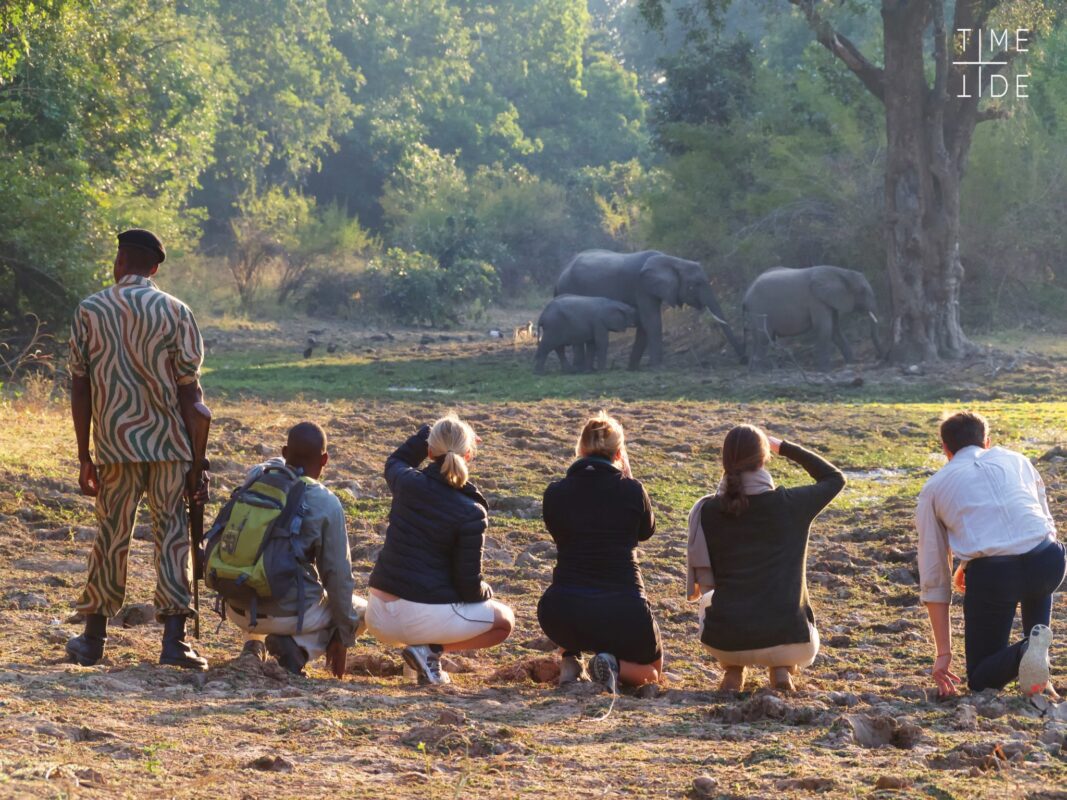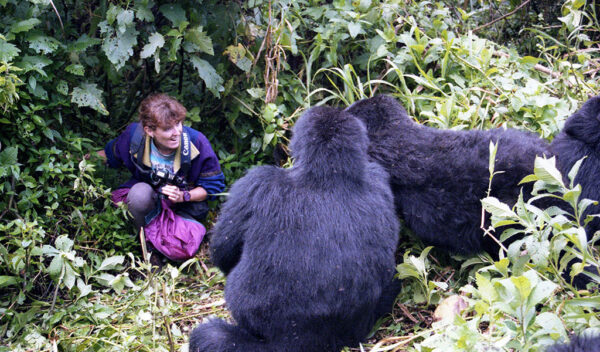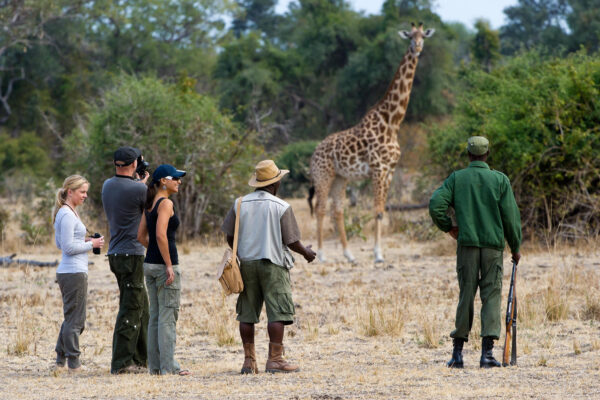How Long Does Chimpanzee Tracking Take?
November 20, 2025
How Many People Are Allowed Per Chimpanzee Tracking Group?
November 20, 2025How Many People Are Allowed Per Walking Safari Group?
One of the most common questions among wildlife enthusiasts is: How many people are allowed per walking safari group? Walking safaris in Uganda offer a unique, immersive way to experience the country’s remarkable landscapes and biodiversity. Unlike traditional vehicle-based safaris, walking safaris allow travelers to connect closely with nature, explore hidden trails, observe wildlife at ground level, and gain insight into ecological patterns that are often missed from vehicles. Uganda Walking Safaris provide an excellent complement to Uganda Gorilla Safaris, Uganda Gorilla Trekking Safaris, Uganda Wildlife Safaris, Uganda Birding Safaris, and Uganda Cultural Safaris, creating a fully immersive safari experience.
Introduction: Experiencing Walking Safaris in Uganda
Renai Safaris emphasizes that the size of a walking safari group is crucial for ensuring safety, intimacy, and quality guidance. Smaller groups enable guides to provide detailed information, manage wildlife interactions safely, and offer a personalized experience. How many people are allowed per walking safari group? Typically, walking safari groups in Uganda are limited to between 4 to 12 participants, depending on the park, terrain, and level of engagement desired. Limiting group size ensures minimal disturbance to wildlife, easier navigation along narrow trails, and a more educational and enjoyable experience. Renai Safaris recommends small-group walking safaris to maximize wildlife sightings, cultural interactions, and the overall satisfaction of Uganda Best Safaris.
Understanding Group Sizes for Safety and Experience
Travelers often ask, How many people are allowed per walking safari group, and why is this important? The number of participants in a walking safari group is dictated by safety, environmental conservation, and quality of the experience. Smaller groups allow guides to maintain close supervision, ensuring that participants follow wildlife etiquette and remain safe in areas with large mammals, snakes, or other potential hazards. In Uganda Wildlife Safaris, maintaining small walking groups reduces the risk of startling wildlife while providing opportunities for more intimate wildlife encounters, whether you are observing elephants in Murchison Falls or tracking buffalo in Lake Mburo.
Renai Safaris ensures that group sizes remain manageable, typically capping at 6-8 participants per guide. This facilitates detailed explanations about wildlife, plants, and cultural aspects along the trail. How many people are allowed per walking safari group? Smaller groups also enhance social interaction and engagement, allowing participants to ask questions freely and receive personalized advice on wildlife photography, birdwatching, and ecological insights. Combining walking safaris with Uganda Gorilla Trekking Safaris or Uganda Chimpanzee Safaris requires careful consideration of group size to maintain safety and quality experiences while exploring Uganda’s forests and savannahs.
Combining Walking Safaris with Gorilla Trekking
A common inquiry is, How many people are allowed per walking safari group if combined with Uganda Gorilla Trekking Safaris? Gorilla trekking is a physically and logistically demanding activity, and group sizes are tightly regulated to minimize stress on the gorillas and ensure visitor safety. Similarly, when walking safaris are combined with gorilla trekking, the group size must remain small to ensure a high-quality, personalized experience. Renai Safaris often designs itineraries where walking safari groups merge seamlessly with trekking groups, but both activities adhere to strict group limits for conservation and safety.
Uganda Gorilla Trekking Safaris generally limit gorilla encounters to groups of 8 people per gorilla family. Walking safari groups are coordinated in similar sizes, usually ranging from 4 to 10 participants per guide. This allows for easy maneuvering through dense forest trails, closer observation of wildlife, and safer interactions with local communities during cultural visits. How many people are allowed per walking safari group? For optimal experience and conservation compliance, Renai Safaris ensures that walking safari groups are small enough to allow both safe gorilla trekking and immersive exploration of Uganda’s natural habitats.
Enhancing Cultural Experiences on Walking Safaris
Travelers frequently ask, How many people are allowed per walking safari group, and can these safaris include cultural experiences? Walking safaris often pass through or near local villages, offering travelers opportunities to engage with communities and observe traditional lifestyles. Smaller groups facilitate meaningful interactions with local people, allowing travelers to learn about Batwa pygmy communities, Bakiga or Batooro cultures, and traditional crafts without overwhelming the hosts. Uganda Cultural Safaris integrated into walking itineraries are far more enriching when the group is small, enabling more personalized experiences.
Renai Safaris recommends small groups of 4-8 participants for cultural walking safaris. This size ensures travelers can ask questions, participate in demonstrations, and fully appreciate the nuances of local customs and rituals. How many people are allowed per walking safari group? Limiting group size also supports responsible tourism by minimizing environmental impact and respecting cultural spaces, allowing travelers to enjoy both Uganda Cultural Safaris and Uganda Wildlife Safaris in a sustainable, authentic way.
Wildlife Observation and Birding Considerations
Another question often asked is, How many people are allowed per walking safari group for birding and wildlife observation? Uganda Birding Safaris and Uganda Wildlife Safaris benefit greatly from small walking groups. Birdwatching often requires silence, patience, and careful positioning to observe elusive species such as the shoebill stork in Mabamba Swamp, turacos in Bwindi, or African green broadbills in Kibale Forest. A smaller group ensures that birds and wildlife are not disturbed and that each participant can enjoy optimal views.
Renai Safaris structures walking safari groups to accommodate a maximum of 6-8 participants for birding walks. This allows professional guides to provide detailed identification tips, ecological insights, and photography advice. Similarly, for wildlife observation, small groups prevent crowding, reduce noise, and increase the likelihood of seeing shy or rare species. How many people are allowed per walking safari group? Smaller groups ensure that travelers enjoy Uganda Best Safaris in an intimate and educational manner, combining birding, wildlife viewing, and cultural interactions seamlessly.
Training and Expertise of Walking Safari Guides
Travelers often ask, How many people are allowed per walking safari group, and how does guide expertise factor in? Renai Safaris ensures that each walking safari group is accompanied by experienced guides with extensive knowledge of Uganda’s flora, fauna, and culture. The smaller the group, the more focused the guide can be in explaining ecological systems, tracking wildlife, identifying birds, and sharing historical and cultural insights. Guides also ensure that participants follow safety protocols, navigate tricky terrains, and maintain responsible interactions with wildlife.
How many people are allowed per walking safari group? Ideally, 4-8 participants per guide are recommended. This balance allows each traveler to receive attention, engage actively, and ask questions, maximizing the educational and experiential value of Uganda Walking Safaris. For more challenging trails or combined itineraries with Uganda Gorilla Trekking Safaris, slightly smaller groups may be used to ensure safety, personalized guidance, and quality experience throughout the safari.
Planning Logistics and Safari Duration
Travelers frequently ask, How many people are allowed per walking safari group, and how does this affect logistics? Group size influences travel arrangements, accommodation bookings, and daily activity planning. Smaller walking groups allow for more flexible schedules, easier access to remote locations, and less time spent managing logistics. For Uganda Walking Safaris combined with Uganda Gorilla Trekking Safaris or Uganda Chimpanzee Safaris, small groups ensure that each participant can be accommodated safely in lodges, forest camps, or community-based accommodations.
Renai Safaris designs walking safari itineraries that balance group size, daily distance covered, and engagement levels. This ensures travelers can enjoy extended walks, wildlife spotting, birding, and cultural visits without feeling rushed. How many people are allowed per walking safari group? Keeping groups small improves the quality of Uganda Best Safaris by allowing travelers to immerse themselves fully in nature and culture while maintaining comfort, safety, and convenience.
Why Choose Renai Safaris for Walking Safaris
Finally, many travelers ask, How many people are allowed per walking safari group, and why should I book with Renai Safaris? Renai Safaris specializes in organizing expert-led walking safaris that combine Uganda Wildlife Safaris, Uganda Birding Safaris, Uganda Cultural Safaris, Uganda Gorilla Trekking Safaris, and Uganda Chimpanzee Safaris into seamless, memorable experiences. Our small-group approach ensures personalized guidance, intimate wildlife encounters, and responsible tourism practices that protect both nature and local communities.
How many people are allowed per walking safari group? Renai Safaris limits walking safari groups to 4-8 participants per guide, striking a perfect balance between social interaction, educational guidance, and safe, immersive exploration. This group size ensures travelers experience Uganda’s ecosystems, culture, and wildlife at their best, establishing Renai Safaris as a leading provider of Uganda Best Safaris and positioning our brand as an authoritative and trustworthy source for Africa tourism content.





